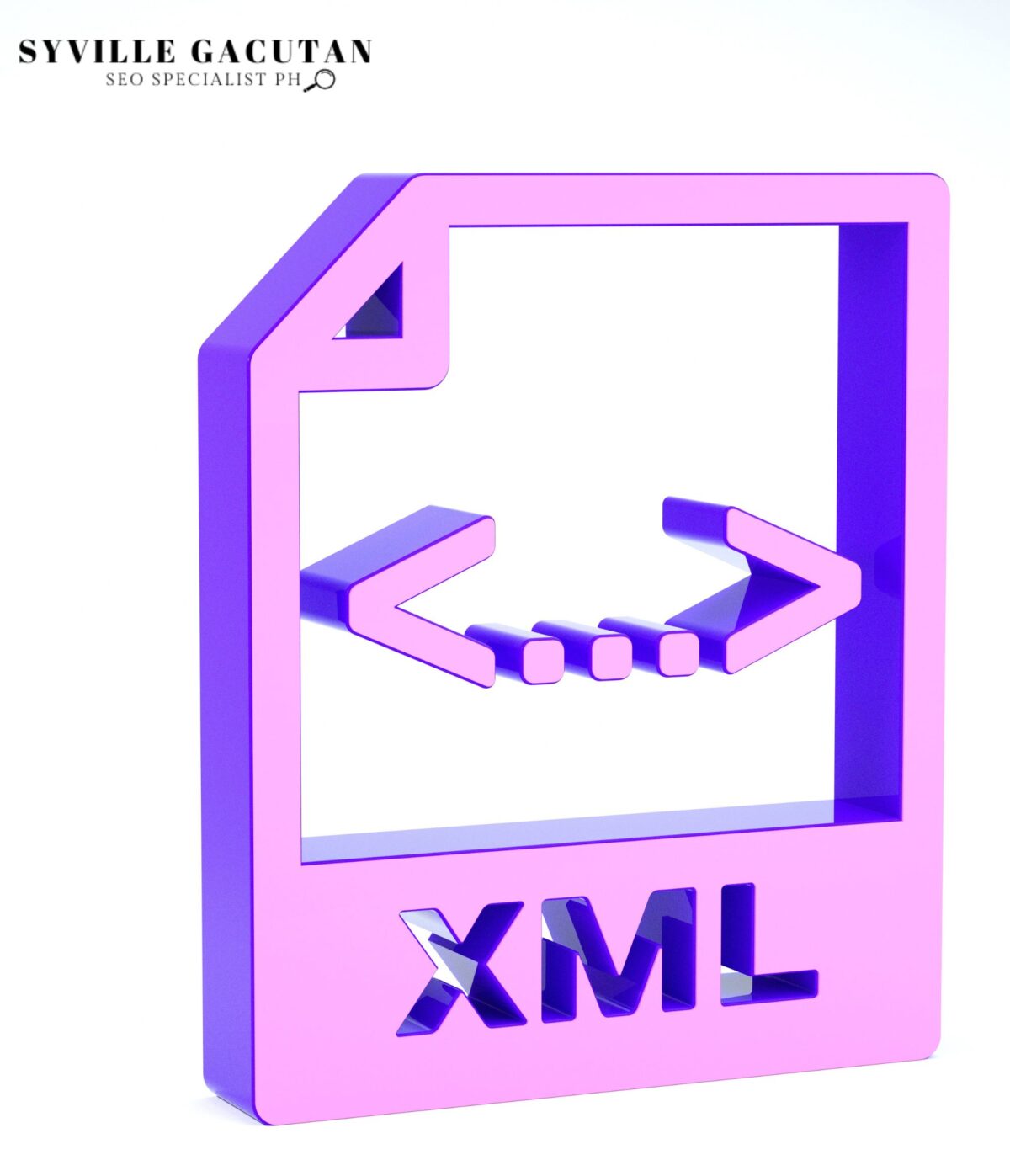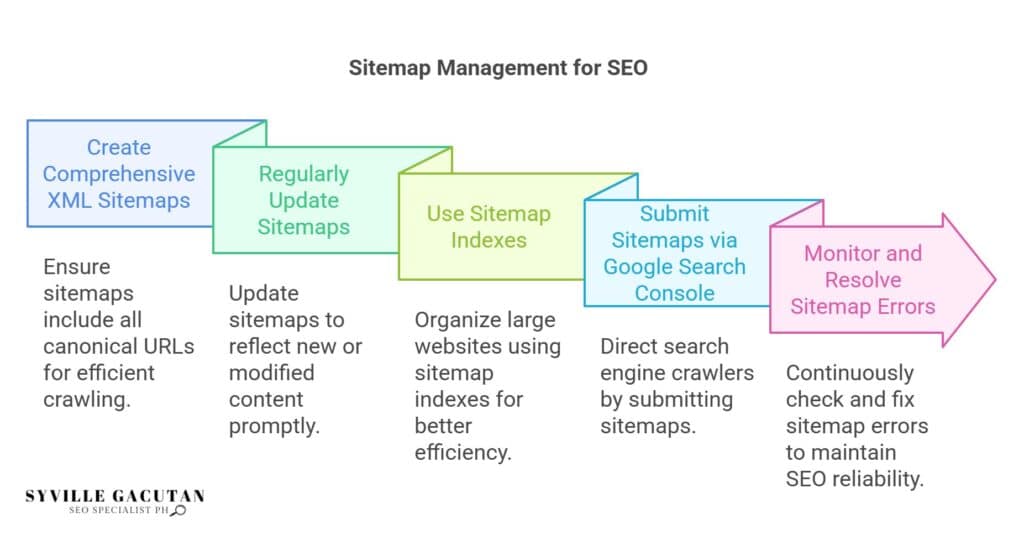
Optimizing XML Sitemaps for Enhanced SEO Results
Optimizing XML sitemaps is integral to improving a website’s SEO as it enhances crawl efficiency and indexing by search engines. A well-structured sitemap ensures that important pages are indexed quickly and accurately, improving search visibility. Key practices include maintaining a hierarchical sitemap structure, ensuring the inclusion of only canonical URLs, and regular updates to signify new content. Using sitemap indexes can optimize large sites by organizing sitemaps by content type, enhancing scalability. Regular submission to tools like Google Search Console can further ensure efficient visibility. Understanding the techniques of XML sitemap optimization for SEO can significantly boost your site’s SEO impact.
Key Takeaways
- Ensure comprehensive XML sitemaps with canonical URLs for efficient crawling and indexing.
- Regularly update sitemaps to promptly inform search engines of new or modified content.
- Use sitemap indexes to manage large websites, improving organization and crawl efficiency.
- Submit sitemaps via Google Search Console to direct search engine crawlers effectively.
- Continuously monitor and resolve sitemap errors to maintain SEO reliability.

Understanding XML Sitemaps
An XML sitemap is a critical tool for enhancing a website’s search engine optimization (SEO) efforts. By providing search engines with a structured map of a website’s pages, XML sitemaps facilitate improved crawl efficiency, ensuring that all important content is discovered and indexed. The sitemap structure is pivotal, as it organizes URLs in a manner that search engines can easily interpret, thus promoting comprehensive indexing.
While both XML and HTML sitemaps aim to guide search engines, their roles differ significantly. XML sitemaps are specifically designed for search engines and encapsulate detailed information about URLs, such as their last update, change frequency, and priority. In contrast, HTML sitemaps are intended for human users to navigate a website.
When optimizing for SEO, it’s vital to employ XML sitemaps due to their advanced capabilities in communicating directly with search engines.
Utilizing the right sitemap tools is essential for creating and maintaining effective XML sitemaps. These tools automate the process of generating sitemaps, ensuring that they are free from errors and always up-to-date with the latest website changes.
Regular error handling is crucial to ensure that no broken or redirecting links are present, which could impede search engine crawlers and negatively affect a site’s SEO performance.
Importance for SEO

For successful search engine optimization, XML sitemaps play a pivotal role in ensuring efficient indexing and visibility of a website’s content. A well-structured sitemap acts as a guide for search engines, allowing them to navigate and index web pages with increased precision. This ensures that all relevant pages are discoverable, improving the site’s search engine ranking and, ultimately, its online presence.
A comprehensive XML sitemap enhances SEO by addressing several critical aspects:
- Crawl Efficiency: A thoughtfully designed sitemap structure aids search engines in understanding the website’s hierarchy, which optimizes crawl paths. This efficiency is vital for large sites where certain pages might otherwise be overlooked. By directing search engines to the most important content, the likelihood of thorough indexing is significantly increased.
- Indexing Speed: With the ever-growing emphasis on timely content delivery, a sitemap ensures that new and updated pages are indexed promptly. This rapid indexing speed is crucial for maintaining relevance in search results, particularly for sites that frequently update or add content. Search engines prioritize sites with regularly updated sitemaps, ensuring new content is visible faster.
- User Experience and Mobile Optimization: As mobile usage continues to rise, having a mobile-optimized sitemap structure is essential. This guarantees that mobile users receive the same quality experience as desktop users, which is increasingly factored into search rankings. A sitemap that highlights mobile-optimized pages can improve user satisfaction and engagement, further boosting SEO performance.
Creating an Effective Sitemap

Crafting an effective XML sitemap is a critical step in optimizing a website for search engines. A well-constructed sitemap structure serves as a roadmap for search engine crawlers, guiding them through the essential pages of a website. By organizing URLs logically, webmasters ensure that search engines can efficiently index and reflect the site’s content in search results.
To begin with, the sitemap structure must be straightforward and hierarchical, reflecting the website’s architecture. This organization facilitates crawler accessibility, allowing search engines to navigate the site seamlessly. It’s important to include only canonical URLs in the sitemap to avoid duplicate content issues, ensuring that crawlers focus solely on the pages that matter most.
XML validation is another crucial aspect of creating an effective sitemap. Ensuring that the XML file adheres to proper syntax standards is vital, as errors can impede the crawlers’ ability to read and interpret the sitemap. Utilizing online validation tools can help detect and rectify any issues, maintaining the sitemap’s integrity.
Sitemap frequency is an essential consideration, especially for websites with frequently updated content. Regular updates to the sitemap inform search engines of new or modified pages, prompting timely indexing.
However, it’s important to balance frequency with relevance to avoid overwhelming crawlers with trivial changes.
Prioritizing Key Pages

While optimizing an XML sitemap, prioritizing key pages is crucial for enhancing a website’s visibility in search engine results. Establishing a well-defined page hierarchy enables search engines to understand the importance of various pages within your site structure.
By strategically selecting which pages to highlight in your XML sitemap, you can significantly influence how search engines allocate their crawl budget, ensuring that your most vital content is indexed promptly and accurately.
To effectively prioritize key pages, consider the following factors:
- User Experience: Pages that enhance user experience should be given higher priority. These include pages that are pivotal for navigation or those that consistently receive high traffic. Prioritizing such pages can improve both retention and conversion rates.
- Content Freshness: Regularly updated content is more likely to engage users and fulfill search engine criteria for relevance. By prioritizing pages with fresh content, you ensure that search engines revisit and index these pages more frequently, enhancing their search visibility.
- Mobile Optimization: In an increasingly mobile-first world, ensuring that prioritized pages are optimized for mobile devices is essential. Pages that offer seamless mobile experiences not only rank better but also cater to a broader audience, thus boosting overall site performance.
Handling Dynamic Content

Beyond prioritizing key pages, effectively managing dynamic content within your XML sitemap is fundamental to maintaining a robust SEO strategy. Dynamic URLs, often generated by user interactions or internal site processes, pose unique challenges in sitemap management. As these URLs frequently change based on content updates or user inputs, ensuring search engines have access to the most current versions is crucial for accurate indexing.
Handling content updates efficiently involves leveraging automated generation tools to continuously refresh your sitemap. These tools can track changes across your website, updating your XML sitemap accordingly to reflect the latest dynamic URLs. This automation minimizes the risk of outdated links, thus promoting a more reliable and updated search engine index.
A common issue with dynamic content is pagination, which can lead to redundant or excessive URLs in your sitemap. Employing effective pagination strategies ensures that only the most relevant pages are indexed, preventing search engines from being overwhelmed by unnecessary content. Implementing techniques such as canonical tags or “next” and “prev” attributes can guide search engines through paginated content, enhancing the accuracy of their indexing efforts.
Query parameters in URLs further complicate sitemap management, as they can generate multiple versions of the same page. To address this, it’s crucial to use URL parameter handling strategies that consolidate these variations, ensuring each URL’s uniqueness and relevance in the sitemap.
Using Sitemap Indexes

In optimizing XML sitemaps for SEO, utilizing sitemap indexes is a strategic approach to manage large and complex websites more effectively. A sitemap index acts as a central repository, linking to multiple sitemap files, thus enhancing the sitemap structure and improving the efficiency of indexing strategies. This is particularly beneficial for websites with extensive content, ensuring search engines can navigate and index pages without overwhelming server resources.
When incorporating sitemap indexes, it is crucial to adhere to best practices to maximize SEO potential:
- Error Handling: Ensure that each linked sitemap is free of errors. Broken links or incorrect URLs can impede search engine bots, reducing indexing efficiency. Regular audits of your sitemap index can help identify and resolve issues promptly.
- Frequency Updates: Regularly update the sitemap index to reflect changes in website content, such as new pages or updated content. This proactive approach ensures that search engines are always accessing the most current version of your site, which is essential for maintaining optimal SEO performance.
- Sitemap Structure: Maintain a logical and organized sitemap structure. Group related pages or content into separate sitemaps, and ensure the sitemap index file itself does not exceed 50,000 URL references or 50MB in size, as per the standard guidelines.
Submitting to Search Engines

After organizing and optimizing your XML sitemap using indexes, the next step involves submitting it to search engines to ensure efficient crawling and indexing of your site’s content. Proper sitemap submission strategies are crucial for enhancing visibility in search results.
Begin by using tools like Google Search Console and Bing Webmaster Tools, which provide straightforward methods for submitting your sitemap. These platforms allow you to directly inform search engines about the sitemap’s location, facilitating a more efficient content discovery process.
Adhering to search engine guidelines is paramount. Ensure your sitemap is well-structured, error-free, and kept up-to-date to comply with each search engine’s requirements. Regularly updating and submitting your sitemap can reinforce the freshness of your content in the eyes of search engines.
However, submission frequency tips suggest a balanced approach: resubmit only when significant site changes occur, such as new content additions or URL updates, to avoid overwhelming the search engine with unnecessary requests.
Monitoring sitemap effectiveness is a critical step post-submission. Use analytics tools available within search engine platforms to track how well your sitemap performs in terms of crawl rates and indexing status. This insight can highlight areas for improvement or reveal issues that need addressing.
Troubleshooting submission errors is essential for maintaining optimal sitemap functionality. Common errors include incorrect URL paths or unsupported formats. Regularly reviewing error reports provided by search engines can help diagnose and resolve these issues promptly, ensuring your sitemap remains a reliable tool for search engine optimization.
Final Thoughts
Optimizing XML sitemaps is crucial for enhancing a website’s SEO effectiveness. By ensuring that sitemaps are well-structured and regularly updated, businesses can significantly improve their crawl efficiency and indexing speed. The importance of maintaining a clear hierarchy, including only canonical URLs, and utilizing sitemap indexes for larger sites cannot be overstated. Additionally, submitting sitemaps to tools like Google Search Console enables search engines to discover content efficiently.
If you’re ready to optimize your website’s XML sitemaps for better SEO performance, connect with Syville Gacutan, an experienced SEO Specialist in the Philippines. Syville can help you structure your sitemaps effectively, monitor for errors, and boost your site’s search visibility. Don’t miss the chance to enhance your site’s SEO—reach out today!